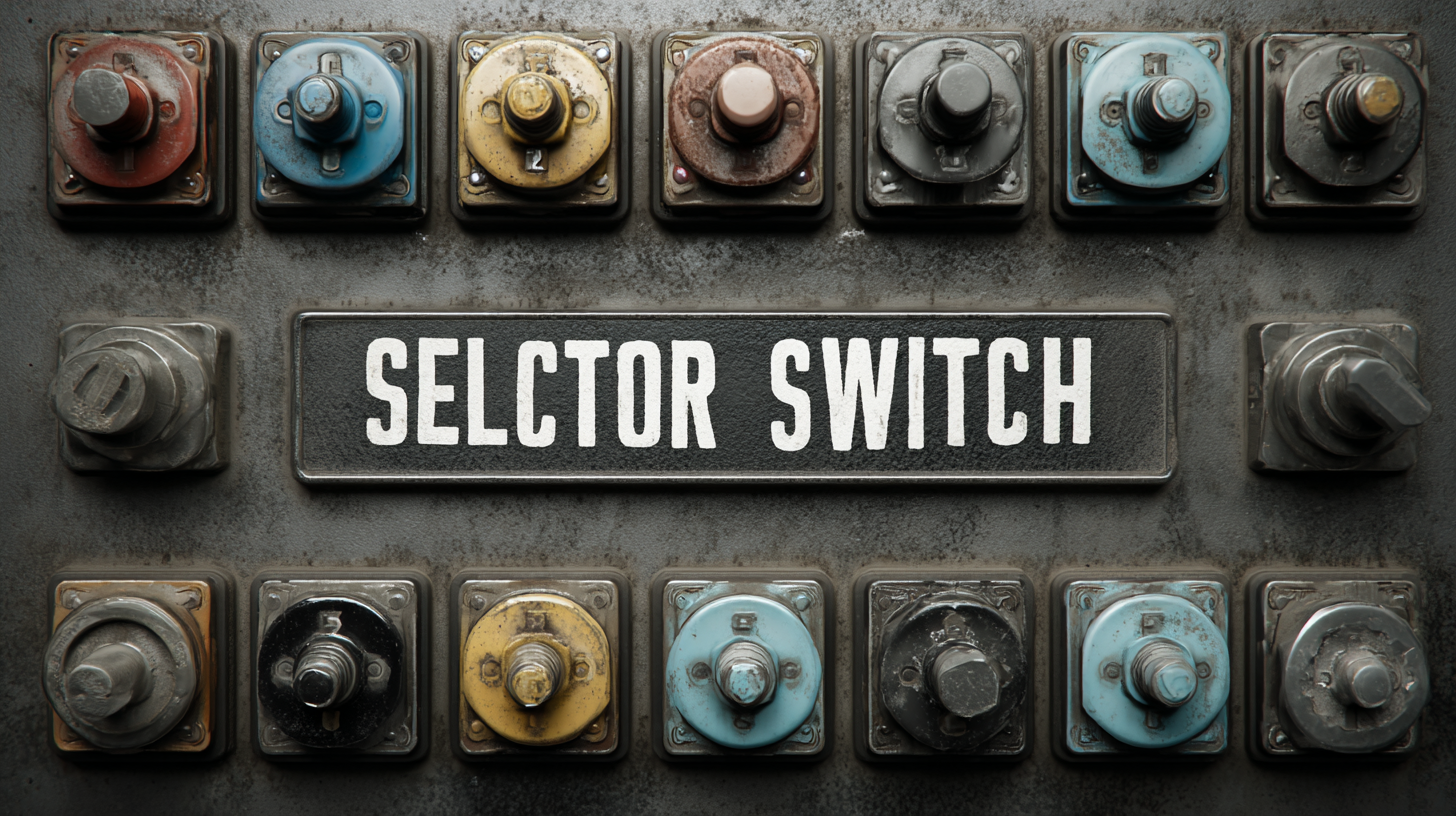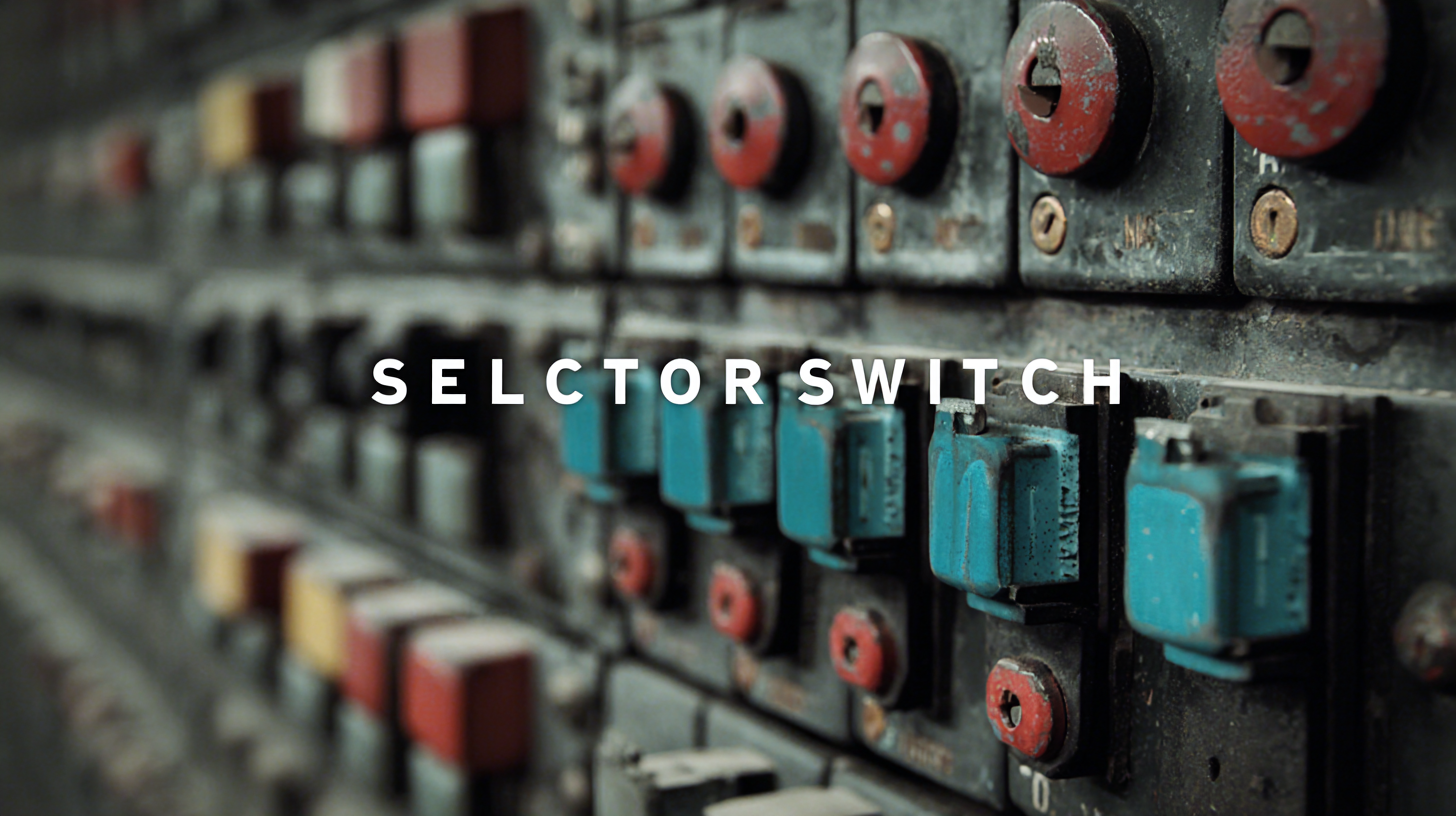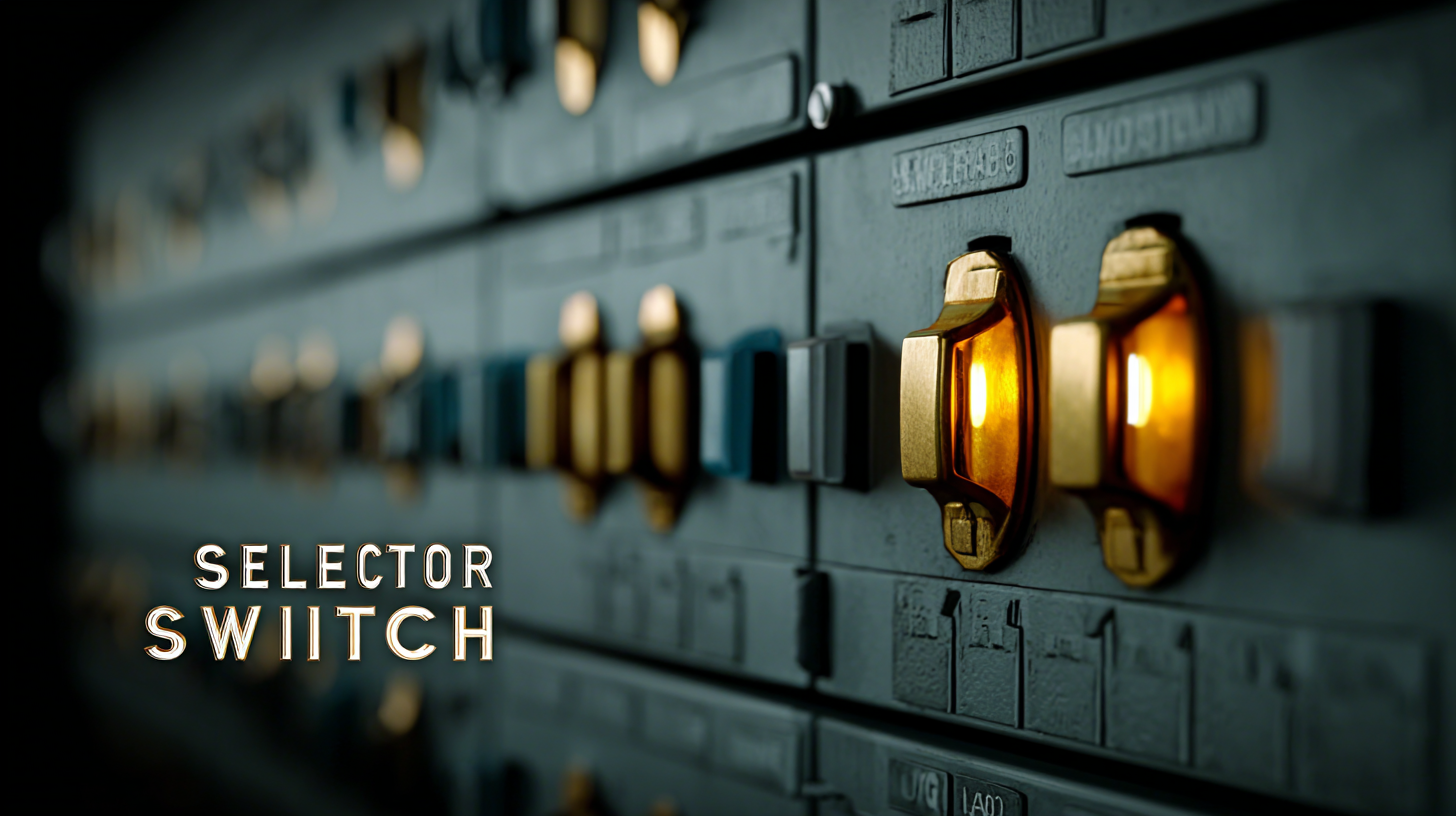
How to Choose the Best Selector Switch for Your Industrial Needs
In today's rapidly evolving industrial landscape, the significance of selecting the right components can greatly influence operational efficiency and safety. Among these critical components, the Selector Switch plays a pivotal role in controlling machinery and processes, making its selection crucial for optimal functionality. According to a report by MarketsandMarkets, the global market for industrial switches, including selector switches, is projected to reach $9.76 billion by 2025, with a growth rate of 6.1% per year. This demand underscores the importance of choosing high-quality selector switches that meet specific operational needs. With the evolution of technology and the increasing emphasis on quality in manufacturing, particularly in "Made in China" products that are leading global exports, it becomes imperative for industries to focus on the quality and reliability of selector switches to enhance productivity and ensure long-term success.

Understanding Selector Switch Types: A Comprehensive Overview
When considering the best selector switch for industrial needs, it's essential to start with a comprehensive overview of the available types. Selector switches come in a variety of configurations, including rotary, toggle, and push-button types. Each type serves different operational requirements and application scenarios. For instance, according to a recent industry report, rotary selector switches are particularly popular in applications requiring multi-functionality and versatility, with their market projected to grow significantly due to advancements in user interface designs.
Furthermore, the specific technical features of these switches—such as the number of positions, lockable designs, and electrical ratings—play a crucial role in their suitability for different industrial environments. Research indicates that the demand for high-quality selector switches has increased, correlating with the rise of automation and monitoring systems across various sectors, including manufacturing and healthcare. As industries continue to evolve and incorporate more sophisticated technologies, understanding these key aspects of selector switch types becomes vital for making informed purchasing decisions that enhance operational efficiency and safety.

Key Factors to Consider When Selecting a Selector Switch
When selecting a selector switch for industrial applications, there are several key factors to consider to ensure optimal performance and reliability. First, it's essential to evaluate the electrical specifications of the switch, such as voltage and current ratings, to confirm compatibility with the equipment it will control. Understanding the specific requirements of your operation, including potential load types, ensures that the selected switch can handle the demands without failure.

Another critical aspect is the environmental conditions in which the selector switch will operate. Consider factors such as temperature, humidity, and exposure to dust or chemicals. Opting for a switch with appropriate ingress protection (IP rating) can help safeguard against these harsh conditions, extending its lifespan and maintaining operational integrity. Additionally, the physical size and mounting type should align with your existing setup, making installation straightforward while allowing for ease of use in demanding industrial environments. Taking these factors into account will lead to a more informed decision and a successful integration of the selector switch into your system.
Evaluating Manufacturer Reputation and Reliability
When selecting a selector switch for industrial applications, evaluating manufacturer reputation and reliability is crucial. Reliable manufacturers typically have a history of producing durable products that withstand the rigors of industrial environments. This evaluation can be strengthened by examining the consistency of their output, the technological advancements they incorporate, and the feedback from users who have experienced their products in real-world settings. Understanding how a manufacturer approaches quality assurance, including their testing protocols and adherence to international standards, can provide insights into their reliability.
Moreover, insights from supply chain management research show that leveraging advanced technologies such as deep learning and machine learning can enhance the decision-making process in supplier selection. These technologies can analyze vast amounts of data to identify patterns and predict future performance, making it easier to assess a manufacturer's credibility. By considering factors like historical performance and supply chain efficiency, industries can make more informed choices, ensuring that they invest in switches that promise not only reliability but also long-term operational success.
Assessing Compatibility with Your Industrial Systems
When selecting the best selector switch for your industrial needs, compatibility with your existing systems is paramount. An effective way to start is by reviewing the voltage and current ratings of your equipment. Ensure that the selector switch can handle the specific electrical loads of your application. Additionally, consider the environmental conditions where the switch will be installed. Temperature, humidity, and exposure to dust or chemicals can impact the performance and lifespan of the switch.
TIP: Evaluate the mechanical endurance of the selector switch by checking its operational cycles. Choose a model that offers high durability, especially if your equipment is frequently used or is subjected to harsh conditions.
Another critical aspect of compatibility is understanding the control logic of your industrial systems. The selector switch must align with the specific functionalities required in your operations, such as momentary or maintained action. Researching different switch configurations can help identify which designs facilitate the best integration into your control panels.
TIP: Consider modular designs that offer interchangeable components, allowing for easy upgrades or replacements without significant downtime. This flexibility can significantly enhance the adaptability of your system as industrial demands evolve over time.
Exploring Safety Standards and Compliance for Selector Switches
When selecting a selector switch for industrial applications, understanding safety standards and compliance is paramount. According to the National Institute for Occupational Safety and Health (NIOSH), electrical hazards contribute to approximately 10% of workplace fatalities in the manufacturing sector. This statistic emphasizes the need for selector switches that meet rigorous safety regulations to protect workers from electrical shock and equipment malfunctions.
The International Electrotechnical Commission (IEC) provides comprehensive safety standards for electrical devices, including selector switches. Compliance with IEC 60947 ensures that switches can operate in adverse environments while maintaining safety. Additionally, obtaining certifications such as UL (Underwriters Laboratories) or CE (Conformité Européenne) marks not only demonstrates adherence to safety norms but also increases confidence in product quality and reliability.
Recent market analysis from Grand View Research highlights that the demand for industrial selector switches is projected to grow at a compound annual growth rate (CAGR) of 5.2% from 2021 to 2028, driven by an increasing emphasis on workplace safety and automation technologies. This growth necessitates a careful selection of switches that align with established safety criteria to mitigate risks effectively.
